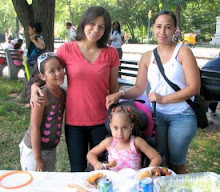Monday, July 27, 2009
U.S. Supreme Court Ruling for Parents of Special Ed Students
By Cassandra Archie
On Monday, June 22, 2009, the U.S. Supreme Court voted 6 to 3 that parents of special education students can seek public reimbursement for private school tuition. The ruling involved a case in Texas of a high school student with learning disabilities who was found not eligible by his school district for special education because the school district said his disorder did not affect his educational progress.
His parents placed him in a private residential school and sought reimbursement.
The school district thought for sure the 1997 amendment to the Individuals with Disabilities Education Act, IDEA, which prohibits reimbursement for students who never received special education services in public school, would be the deciding factor in this case.
But Justice John Paul Stevens who wrote for the majority said, “It would be strange for the act (IDEA) to provide a remedy, as all agree it does, where a school district offers a child inadequate special education services but to leave parents without relief in the more egregious situation in which the school district unreasonably denies a child access to such services altogether.”
Justice John Paul Stevens concluded “IDEA authorizes reimbursement for the cost of private special education services when a school district fails to provide a (free appropriate public education) and the private school placement is appropriate, regardless of whether the child previously received special education or related services through the public school.”
Is this ruling a victory for parents and students who are seeking private school placement, or a drain on public school special education dollars?
Tuesday, July 21, 2009
Tape Recording IEP meetings
Tuesday, July 7, 2009
Parent Involvement in their Children's Schools
There are many practices that help empower families, and it is not known by many that these practices are actually required by the the federal No Child Left Behind law. Some of these practices include:
•Engaging families in planning how they would like to be involved at school. Parents have a voice in determining school policies and practices;
•Procedures that make it easy for parents to meet and discuss concerns with the principal, talk to teachers and guidance counselors, and examine their children's school records;
•Schools offering workshops for families on child development and communicating with their children. Parents can suggest topics, such as talking with children about drugs, dating, problems with friends or family, and values.
When parents are engaged with the school, they feel empowered to change and control their circumstances, and their children tend to do better in school. When schools work with families to develop their connections, families become powerful allies of the school.
However, the reality regarding some New York City schools may be quite different for many families and parents as they try to engage the schools their children attend. Too often they encounter problems and barriers as they attempt to get involved. Sometimes even the act of trying to get into the school building proves to be difficult.
What are some of your stories concerning how you get involved in your child's school?
Does the school support your involvement or create challenges?
What are some of your ideas for improving communications with school officials and teachers?
Wednesday, July 1, 2009
Persistently Dangerous Schools and Safety Transfers
Since 2003 the federal No Child Left Behind Act requires states to identify “persistently dangerous” schools. It also allows parents of transfer students that attend these schools. In general, if a student becomes a victim of a violent crime, parents can request safety transfers through their borough's enrollment office. In cases where the child attends a special education program, a safety transfer can be obtained through the Committee on Special Education (CSE) office which collaborates with the New York City Department of Education’s Office of Student Enrollment Planning and Operations (OSEPO). The list of "persistently dangerous schools" is made available to parents through the NY State Department of Education (click here to view the word document). Parents also receive a notification from the State Education Commissioner.
Does this mean that only students who are victims of crimes can request transfers?
It is the general understanding that unless the parent has made a police report or the school has generated an incident report, the student would not be awarded a transfer for safety reasons. But why wait until an incident occurs? For many parents and advocates it makes sense that these student be granted a transfer when requested and not necessarily after an incident had occurred. The State Education Department releases the list of "persistently dangerous schools" late in August which gives parents little time to request transfers.
How is this related to Special Education?
Children in special education programs are the most affected by crimes and insecurity in schools. The “persistently dangerous” list generated for the 2008-09 school years includes thirteen District 75 schools (specialized schools for children with disabilities).
What are your choices?
If your child’s school appears in the list of “persistently dangerous” schools you have the right to request a transfer under NCLB. You can also reject a placement offer based on these criteria. For more information you can visit the NY State United Teachers info page.
By: Yesenia Estrella
Metropolitan Parent Center @ Sinergia










